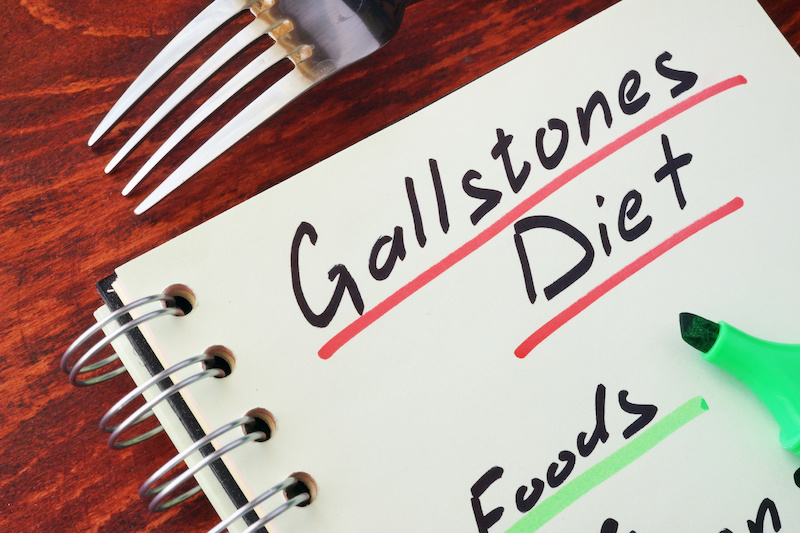What To Eat When You Have Gallstones
August 2 2018
Gallstones are twice as common in women as men. They are made from cholesterol and bilirubin, which are components of bile within the gallbladder. When these components aggregate, they form stones. The size of gallstones can vary from pebble sized grainy stones up to one large hard stone.
Both specific foods and lifestyle factors influence your risk of getting gallstones. Losing weight rapidly and weight gain increase the risk. Cohort studies suggest that protective factors include having healthy eating habits, especially eating lots of vegetables and fruits and having a high fibre intake, and surprisingly, having a moderate alcohol intake.
Preventing gallstones
If you have a family history of gallstones, focus on developing healthy eating patterns. An American study in more than 13,000 adults followed up for 10 years, found that women with higher blood levels of vitamin C were less likely to develop gallbladder disease, but not men. Most vitamin C came from foods. Good sources include capsicum, cabbage, Brussel sprouts, cauliflower, broccoli, green leafy vegetables, tomatoes, citrus fruit, pawpaw, kiwi fruit, strawberries and pineapple. Studies where vitamin C supplements were used have found inconsistent results. So stick with the vegetables and fruit.
Increasing your fibre by eating more legumes, pulses, wholegrains, vegetables and fruit also lowers gallstone risk. A major review of studies that included more than 220,000 people, found a reduced risk of gallstones in those who drank four or more cups of coffee a day. In some of the individual studies, coffee was only protective in women. If you are sensitive to the stimulating effect of caffeine, make some decaffeinated and avoid caffeine in the 5-6 hours before bedtime. When it comes to alcohol, moderate your intake to lower your risk of gall bladder disease. Don’t start drinking if you are currently a tea-totaller. Alcohol guidelines recommend no more than two standard drinks on any day and at least two alcohol free days a week.
Try to manage your weight
Slower weight loss of about half a kilogram a week is recommended. Losing weight faster than this increases the risk of gallbladder disease. That’s because if you severely cut back your food intake, you need less bile (which works like a food emulsifier). So your gall bladder contracts less and stones are more likely to form. The things that help lower gallstone risk when you are losing weight are having a high fibre diet, still eating at least 20 grams of fat a day to keep the gall bladder working, and having some caffeinated drinks like coffee, diet cola and tea to stimulate the gall bladder to contract.
Once your gall bladder has been removed
This means that bile is no longer able to be stored and trickles constantly into your intestine. Take care to avoid large fatty meals as undigested fat will pass through into your large bowel. The healthy bacteria in your colon will try to break this down. Over time your gut will try to adapt but you are more likely to experience fatty diarrhoea. If this happens regularly, you are likely to also excrete fat soluble vitamins, such as vitamins A and E. You can boost your intake of these by regularly eating good sources of beta-carotene – the vegetable form of vitamin A found in dark yellow, orange and dark green vegetables, including pumpkin, carrots, sweet potato, spinach and broccoli. Food high in vitamin E include nuts, seeds, wholegrains, peanut butter, Tahini, spinach, broccoli, tomato, avocado, kiwifruit and mango.
While you can’t change your genes or family history, you can improve your eating patterns and lower your risk of gallstones.
First published in Medibank’s be. magazine.
Sourced from Dieticians Association of Australia.
